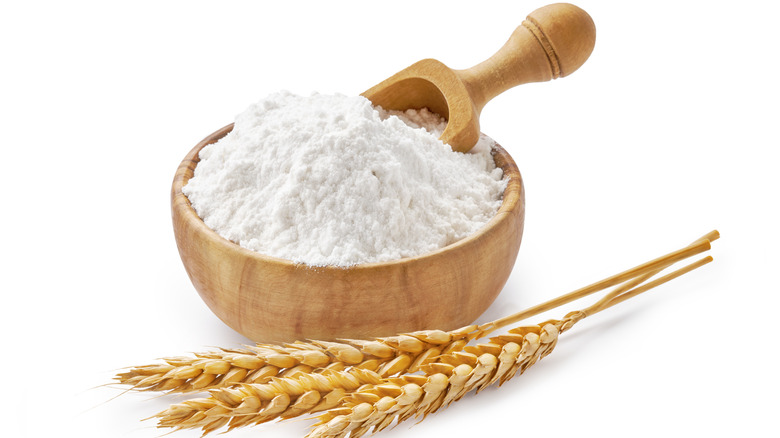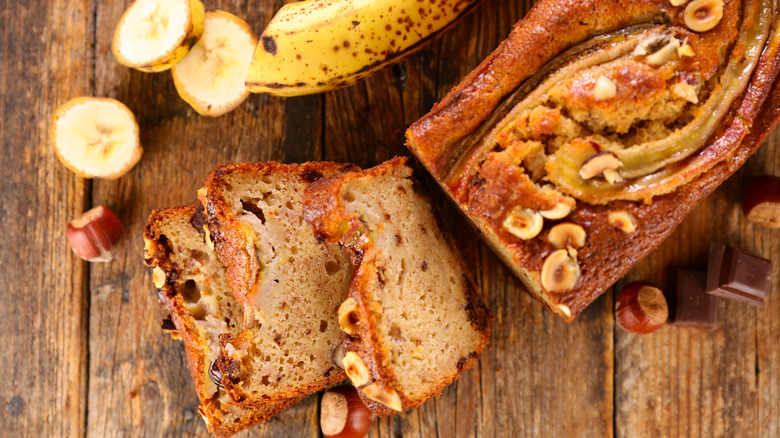How One Flour Mistake Can Ruin Your Banana Bread
When compared to intricate layered cakes and desserts, banana bread is on the more beginner-friendly end of the baked good spectrum. You can typically combine all the ingredients you need in one large bowl, pour it into your loaf pan, and you'll be enjoying fresh-baked banana bread in no time at all. The hardest part, in many cases, is waiting for your bananas to reach the optimal level of ripeness.
Plus, you can typically whip up a loaf of banana bread with very few ingredients on hand, making it an ideal choice for when you want something sweet but your pantry is relatively empty. Sure, you can absolutely add mix-ins such as nuts, chocolate chips, and more. However, as this 3-ingredient banana bread recipe demonstrates, you don't need much.
However, that's not to say that banana bread is completely foolproof. There are certain common banana bread mistakes that can jeopardize the results of your loaf. For example, you just won't get the same level of sweetness if you make it with underripe bananas. You also won't get the same texture in your loaf if you overmix the batter.
There's one more specific mistake you can make that happens before you put your loaf in the oven, and it has to do with one of the key ingredients of any loaf, from regular bread to banana bread: flour.
Make sure to measure correctly
Baking is about precision. While you can add in a spoonful of this or that when you're cooking and end up with a tasty final product, erring in your measurements while baking can easily cause a total disaster. This is definitely the case with flour.
Because banana bread is typically quite moist, it's all the more important to get the measurements correct, as Allrecipes outlines. If you add a little too much, you'll end up with a dry loaf of banana bread that falls short of your expectations. The solution is simple — rather than just scooping the flour out of the bag, which can lead to you accidentally incorporating too much flour, you want to spoon the flour into a measuring cup and then level it off to get the correct amount.
This is because, as Food Network explains, flour can get packed down more easily than baking staples such as granulated sugar. This means a cup of flour likely doesn't weigh the same if it's been aggressively scooped vs. spooned in and leveled.
However, if you really want to make sure your banana bread turns out the way you want it to, you can go one step further. One of the best ways to measure flour accurately is by weighing it, notes The Spruce Eats. With the help of an inexpensive digital scale, you can get the measurement down to the exact gram, leaving no room for error.

